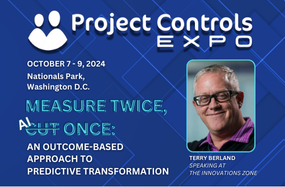
Solving Megaproject Challenges with Technology

The challenges with megaprojects are various and complex. Multi-stakeholder megaprojects with enormous infrastructures—such as bridges, dams, railways, and highways, with a typical budget in the billions—can last several years, increasing risk and impact on profitability. Furthermore, they require specific cost and benefit-related project controls and best practices unique to large construction and engineering projects. But digitalization is a feasible solution.
Identifying the right technology strategy can ensure megaproject success in facing these challenges:
- Joint venture partner lack of collaboration
- Unusable data blocking business intelligence
- Complex software overburdening IT support
- Unforeseen complications challenge the project controls process
- Avoid scope creep
1.) Joint venture partners tackle collaboration
Megaprojects, by their nature, present the challenge of collaboration between joint venture partners involving multiple partners and stakeholders. Joint venture (JV) partners can span great distances and jurisdictions and involve various stakeholders and complex funding sources.
Take HS2, for example. The UK’s new high-speed rail project is an ambitious infrastructure project that aims to connect the whole of England, with trains scheduled to run between the North West and South East railways of the UK. To help facilitate communication in the face of hundreds of changing variables, many HS2 partners utilize a cloud-based platform accessible from anywhere to allow a more seamless transition of duties between onsite team members and remote joint venture partners.
The Construction Financial Management Association (CFMA) recommends leaders utilize effective communication practices if they want their projects to succeed. They encourage collaborative team building, problem-solving, timely decision-making, and a visible leadership presence. Because megaprojects so often involve multiple stakeholders, it is imperative to communicate clearly and practice joint decision-making.
Furthermore, when billions of dollars are at stake, ensuring all parties are clear on budget guidelines is critical. Accurate project intelligence and scheduling based on current information are vital. If any aspect is off schedule, this will require adjustments for the rest of the teams involved. Communicating adjusted schedules and budgets can hit colossal roadblocks when information comes from multiple sources, apps, and groups.
A cloud-based project platform is designed to facilitate seamless communication and transition between stages of a megaproject. With cloud scheduling software and budgeting apps hosted in a single platform, key stakeholders have direct access to collaboration tools for scheduling to prevent duplicate efforts. Proven, industry-specific cloud solutions like LoadSpring’s platform for construction & engineering, telecommunications, or energy & utilities provide the technology and speed to access information encompassing the project lifecycle. As the recent infrastructure funding bill demonstrates, communication and transition of team responsibilities are never easy, so keep things simple with a single sign-on platform accessible from anywhere.
2.) From data confusion to business intelligence
For projects of any size, the amount of data has increased. With megaprojects, the complexity becomes twofold, and manageability is key to success.
The technology used to collect and store all that data requires speed equipped with cloud business intelligence solutions to show you what has happened with the project in the past and predictive analytics capabilities to forecast the future state. Decision-makers that rely on these insights must understand the project’s health, progress, and status. With inputs rolled up and presented in a dashboard, calculating cost, comparisons, and trends is suddenly visible.
A shared digital solution that houses essential data on project progress, team vitals, and overview information for management—as well as all other relevant information—is critical. New predictive analytics technology is increasing in complexity, allowing greater visibility. A platform that houses various software program applications should be well integrated with mobile, on-the-ground recording and data-collecting tools.
Furthermore, near-real-time data updating can help ensure accuracy. According to a recent article by megaproject researcher and consultant Bent Flyvbjerg, “Two factors play a critical role in determining whether an organization will meet with success or failure: replicable modularity in design and speed in iteration. It will likely succeed if a project can be delivered quickly and in a modular manner, enabling experimentation and learning along the way. It is likely to be troubled or fail if it is undertaken on a massive scale with one-off, highly integrated components.”
In other words, your cloud business intelligence solutions can be unique. Still, they also should be replicable—and replicability should be performed relatively quickly to remain competitive, whether with physical or data-based building blocks.
Consider BAM Nuttall’s decision to examine existing data via LoadSpring Cloud Platform’s LoadSpring INSIGHTS—LoadSpring’s three-phase approach to project intelligence. LoadSpring INSIGHTS harnesses a comprehensive data transformation process—Extract-Clean-Build—to display clean, trustworthy data to customers.
After their data was cleaned and usable, they gleaned deeper insights, greater transparency, and better data trust. This, in turn, allowed their civil engineering infrastructure customers to feel more informed about project controls and BIM software-based workflows as well, as a result. Moving forward with cloud-based data architecture, they have become increasingly data-driven while enjoying robust performance—preventing miscommunication while maintaining trust.
3.) Streamlining IT support for complex software
With more projects increasing in scale comes more complex software to support them. The right megaproject management software will help facilitate more immediate access to project status, progress, and current data across various teams. This is especially true if it is designed explicitly for more extensive data capacity, high-risk megaprojects. Try implementing digital—rather than analog—solutions. This calls for a cloud-based, near-real-time platform that allows team members and joint venture partners to communicate with one another, regardless of time or geographical distance. Megaprojects demand large-scale, efficient implementation and a customer success team to guide the process each step of the way
One of the companies contributing to HS2, Mace Dragados JV, needed an environment accommodating JV non-employee access to project data via Oracle P6, a scheduling app. Within days of the contract, the support team created an online project environment for the JV, which allowed LoadSpring to host P6 just as the project was mobilizing. Swift application and customer support speed allowed the Mace Dragados administrators to acclimate to the user interface quickly, with a fast allocation of technical questions and software upgrades.
Regardless of the number of application options, if you partner with a cloud-hosted platform provider who offers you a wide variety of vendor-neutral software applications, your choice will be more logistical than personal. If faced with more than one viable platform provider, consider other benefits, such as IT support and security protocols. With joint venture projects, security is of the utmost importance—especially when dealing with financials and similar types of confidential information.
4.) Proper project controls response to disruption
Having proper project planning and control systems enable both visibility and accountability for spending, whether from government or private funding. Project controls software defines key outcomes and minimizes waste in the face of unforeseen obstacles.
Flashback to 2020 when the unforeseen COVID-19 pandemic developed on a grand scale, impacting every industry. After businesses were forced to pivot toward fully remote workplaces, cloud adoption granted project teams the ability to communicate, despite the limitations imposed by social distancing. No longer impeded by siloed legacy systems, as many as “69% of businesses say cloud technologies helped their pandemic recovery,” according to VentureBeat.
McKinsey also notes unforeseen costs can incur when big projects cross state or national borders: “A new railway could involve three national governments, numerous local governments, different environmental and health standards, varying degrees of skills and wage expectations, and dozens of private contractors, suppliers, and end users.” Megaprojects on such a massive scale require skillfully managed project controls.
Since delivering on time and within budget is typically considered the most critical measure of megaproject success, cloud-based project control platforms offer a transparent method of tracking and reporting progress. When moving to the cloud, project controls can stay ahead of future disruptions and rely on a flexible, adaptable technology response that accounts for tomorrow’s innovations.
5.) Avoid scope creep with strategic planning
Complications and collateral impacts have one thing in common with our final megaproject challenge: scope creep. Unfortunately, scope creep is inevitable—to an extent.
Project deviations or requests can multiply, leading to vast differences in the cost of products and services, for instance—or prolonged time required to complete additional requests. Here are some of the worst scope creep offenders to date:
- The Chunnel: $4 billion & 80% over budget
- Denver International Airport: $3 billion & 250% over budget
- Boston’s Big Dig: $13.4 billion & 220% over budget
- Sydney Opera House: $95 million & 1400% over budget
And scope creep doesn’t just plague megaprojects. It could be (and probably is) hurting you too.
Strategies for avoiding excessive scope creep can include conducting feasibility studies, setting goals based on precedent, establishing open communication channels, setting a clear schedule, documenting requirements, avoiding perfectionism, and planning for change management.
Fortunately, technology strategies for solving scope creep include cloud-based project management tools developed for complex projects, such as Oracle P6 EPPMM, EcoSys, or other project portfolio management software based in the cloud. These tools facilitate various “What if?” situations. Project management apps allow project managers to envision the consequences of multiple scenarios, examining possible impacts more clearly, such as those related to cost and schedule, feasibility, and whether alterations have sufficient cause.
Considering megaproject technology? Keep this in mind…
Technology alone is not the panacea for all megaproject challenges. That’s why LoadSpring provides custom solutions for our customers to ensure high performance, user adoption, and adherence to best practices. Our technology-enabling cloud options unify best-of-breed hosted software to accelerate users’ digital transformation. We offer solutions specifically designed for projects in industries like construction & engineering, energy & utilities, telecommunications, and city/state/transportation. Our cutting-edge innovations for BI and data analytics keep megaprojects on track to maximize margins.
Industry leaders would be wise to turn to LoadSpring’s technology solutions for megaprojects. Read recent customer success stories to learn what our customers are able to achieve using LoadSpring’s advanced technology solutions.








